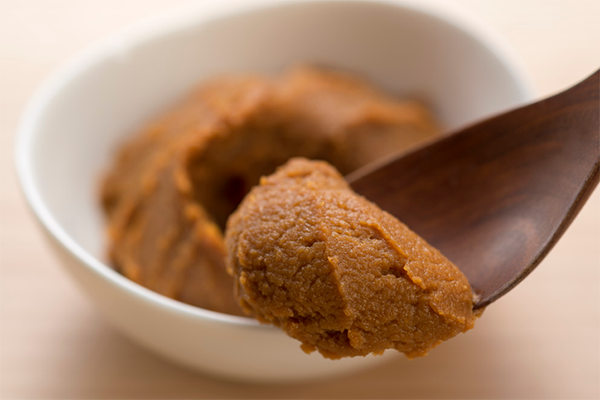9 Fermented Foods You Should Try and Their Benefits

Experts have a gut feeling: You should probably start eating more fermented foods.
Fermentation involves exposing food to yeast or microorganisms that break down components such as starch and sugar. This ancient method of food preservation may offer real benefits for the body.
Fermented foods contain “good” bacteria that can help keep our gut and our microbiome healthy, says Amy Shapiro, MS, RD, CDN, of Real Nutrition NYC.
They assist with digestion, may help support a healthy weight, support immunity and skin health, and much more, Shapiro adds. “Research is constantly evolving on this topic.”
Among the research is a 2021 study conducted at Stanford University, which found that eating fermented food seems to help improve gut health by increasing microbiome diversity.
Much of the body’s immune system is located in the gastrointestinal tract, and research indicates that certain types of healthy bacteria — such as the probiotics found in fermented foods — may support this vital defense.
Want to add more fermented foods to your diet? Here are a few to try.
1. Sauerkraut
Perhaps the most well-known fermented food, sauerkraut is shredded cabbage that has been fermented, most commonly in a solution of vinegar and salt.
The process imbues this already healthy vegetable with additional benefits. Sauerkraut contains Lactobacillus bacteria, organic acids that support good bacteria growth and healthy vitamin C and digestive enzyme levels, says Carrie Lam, MD, FAAMFM, ABAARM, a board-certified family medicine physician in Los Angeles.
Look for sauerkraut that has not been pasteurized, which kills off the good bacteria.
“Personally I add sauerkraut to my salads on most days,” Shapiro says.
2. Kimchi
Kimchi — “the Korean cousin to sauerkraut,” Lam says — is made with cabbage and spices, then aged. Its sour, spicy, pickle-like flavor can add interest to basic meals like chicken, salmon, and salads, along with a boost of fiber, antioxidants, and vitamins.
A recent study found that fermented Korean foods such as kimchi may help support a healthy immune system along with gut and lung health.
3. Kombucha
Kombucha is black or green tea fermented in a symbiotic colony of bacteria and yeast (also known as “SCOBY,” or “the mother,” because it reproduces during fermentation). This process creates healthy bacteria and antioxidants that may be beneficial.
4. Kefir
Kefir is milk from goats, sheep, or cows that has been fermented with kefir grains, which are kernels of bacteria and yeast. It has the consistency of thin yogurt.
Research suggests kefir may have antimicrobial properties, and may help with regulating gut microbiota and supporting healthy blood glucose levels.
5. Yogurt
“I like to incorporate yogurt and kefir into my diet almost daily,” says Sarah Schlichter, MPH, RDN, a registered dietitian nutritionist in Frederick, MD.
“Both are great sources of protein, calcium and vitamin D, and live bacteria for flourishing the gastrointestinal tract,” Schlichter says. “I always recommend clients incorporate protein into snacks, and this is an easy and beneficial way to do so.”
6. Tempeh
Tempeh — fermented soybeans that have been formed into a block — can be a kitchen MVP for anyone who’s trying to replace meat with more plant-based options.
“Tempeh is a great plant-based protein source that takes on the flavor of what you season it with or cook it with,” Schlichter says. “I love making it in the air fryer and throwing it on a stir-fry or salad.”
7. Natto
Natto is a Japanese dish of fermented soybeans that contains the beneficial bacteria Bacillus subtilis. This bacteria may help support the immune system as well as cardiovascular health, Lam says.
8. Miso
If you’re a fan of sushi, you’re probably familiar with its frequent companion, miso soup — but you may not have realized this soup has a fermented base.
“Miso is a major component of Japanese medicine,” says Lam. “It is a paste made from fermented soybeans, rice, or barley. Traditionally, it is used to stimulate digestion and increase energy.”
9. Apple Cider Vinegar
Apple cider vinegar doesn’t contain the probiotics of other fermented foods on this list. “However, it’s still a fermented food that contains some bacteria — especially if raw and contains ‘the mother,’” says Shapiro, who drinks hot water with apple cider vinegar after dinner to help aid digestion.
“Research claims it may help to balance blood sugar and fight harmful bacteria,” Shapiro adds.
Easy Ways to Add Fermented Foods to Your Diet
If you’re looking to incorporate more fermented foods into your meal plan, start with plain Greek yogurt, kimchi, kombucha, kefir, or tempeh.
“These are easy to incorporate at any meal, widely available, taste great, and provide other health benefits such as protein, fiber, vitamins, and minerals,” Shapiro says. They’re also typically low in sugar and minimally processed.
To get the most benefits from fermented foods, eat a variety. “I recommend mixing up fermented foods to receive a variety of healthy bacteria strains,” Shapiro says.
Support the good bacteria in your gut by consuming fermented foods along with fiber. “Fermented foods require prebiotics or fiber to proliferate and thrive in our bodies, so consider consuming your fermented foods along with a salad or other plant foods, which are naturally high in fiber,” Shapiro suggests.
Some easy ways you can add these fermented foods to your routine:
- Greek yogurt with chia seeds and berries for breakfast
- Tempeh with vegetables for lunch or dinner
- Kombucha as part of a meal or healthy snack beverage
- Adding sauerkraut to sandwiches or salad for a boost of flavor.
Source link
#Fermented #Foods #Benefits











